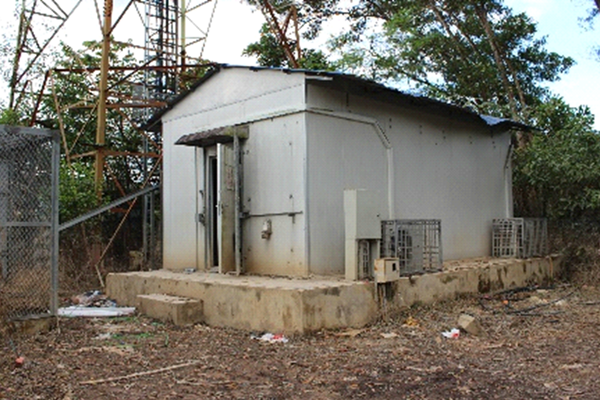Data Centres: Managing Risk in the Digital Backbone of Modern Business

Data centres have become indispensable to modern life. From cloud computing and online banking to media streaming and healthcare services, they support the data-driven operations of nearly every major industry. Yet, as their scale and complexity grow, so too does the potential for failure. At Envista Forensics, we are seeing an increasing number of high-value claims tied to both the construction and operation of these facilities. Understanding the risks is essential for insurers, developers, and operators alike.
The Growth and Purpose of Data Centres
A data centre is a purpose-built facility that stores and manages critical IT infrastructure: servers, networking equipment, and data storage. These centres are engineered for uninterrupted performance and security, often housing tens of thousands of servers operating continuously. Major tech companies such as Google, Amazon, and Meta have invested in large-scale “hyperscale” centres, while smaller businesses often rely on colocation centres that offer shared space and services. In Asia alone, over 1,000 data centres are currently in operation, with high concentrations in China, Japan, India, and Singapore.
Infrastructure and Redundancy
Because downtime can have catastrophic consequences, data centres are built with varying degrees of fault tolerance. They are classified by tier levels, from Tier I to Tier IV, which reflect their reliability and redundancy. A Tier I facility may experience over 28 hours of downtime per year, while Tier IV centres are designed for less than 30 minutes of annual downtime. Achieving such reliability involves the implementation of duplicated systems for critical infrastructure, known as redundancy, with configurations ranging from basic (N) to highly fault-tolerant (2N+1).
The infrastructure supporting these facilities is as important as the IT equipment itself. Power delivery systems, uninterruptible power supplies (UPS), cooling systems, and physical security are all critical. In Tier IV centres, every component has an independent backup system, and routine maintenance can occur without interrupting operations.
The Cost of Performance
Data centres represent significant capital investments, with construction costs frequently measured by megawatt of IT load capacity. A small centre supporting 1 to 5 MW can cost upwards of $12 million, while large-scale hyperscale facilities often exceed $1 billion. A major portion of this investment is tied to electrical systems, generators, UPS, transformers, etc., which can account for roughly 40 to 45% of construction costs.
Operational costs are equally significant, with power consumption often comprising up to half of total expenses. Location, climate, energy efficiency, and redundancy levels all influence both the upfront and long-term costs of these facilities.
Key Risks in Construction and Operation
The risks associated with data centres begin long before the servers go live. During construction, issues such as geotechnical problems, poor workmanship, and premature equipment installation can lead to significant delays or failures. Envista has investigated cases involving bus duct collapses, arc flashes during commissioning, and UPS battery fires, all of which occurred before the facility was operational.
Once online, data centres face a new set of challenges. Power failures, cooling system breakdowns, network outages, and cyberattacks are all threats to uptime. Battery fires, particularly those involving lithium-ion technology, pose a unique hazard. Our forensic investigations confirm that traditional fire suppression systems are often ineffective against these types of fires, and reignition is a documented concern. In one recent incident, a Li-ion battery continued to react and release gases two days after being removed from a fire site and fully submerged in water.
The drive to improve data centre availability and efficiencies can increase fire risk and the extent of contamination in case of a fire, such as the shift from centralised UPS systems to decentralised models.
Evolving Standards and Insurance Considerations
As battery technology and fire safety concerns evolve, so too do building regulations. In 2023, Singapore revised its fire code to require large energy storage systems to be installed on the ground floor, adjacent to fire engine access roads. Waivers are available under specific conditions, but the change signals a broader global trend toward stricter fire safety requirements for high-density data facilities, including a move from active fire extinguishment to explosion prevention and fire containment.
These developments have direct implications for insurance. Underwriters must assess potential business interruption (BI) exposure, especially in shared colocation centres. Probable Maximum Loss (PML), battery type and placement, fire suppression effectiveness, and redundancy levels are all critical underwriting considerations. New technologies, such as sodium-ion batteries, are being tested as safer alternatives, but real-world performance data remains limited.
Lessons from the Field
Envista Forensics has investigated numerous losses at data centres across Asia-Pacific. During construction, we’ve identified design flaws, workmanship issues, and sequencing errors that led to equipment damage or fire. Operational losses have included environmental contamination, accidental fire suppression system discharges, and network equipment failure. In one case, a gas suppression system released during a lightning storm due to a flaw in the system’s design. In another, racehorse training near a facility led to airborne contaminants that entered the data halls and compromised server and data storage equipment.
Conclusion
Data centres are mission-critical infrastructure, and the consequences of failure can be severe. As these facilities grow in scale and complexity, stakeholders must take a proactive approach to risk identification and mitigation. From construction oversight to battery fire suppression to insurance structuring, every component plays a role in ensuring uptime, safety, and resilience.
Envista Forensics brings global expertise and multidisciplinary insight to support clients in navigating the challenges of modern data centre operations. For forensic investigation, risk consulting, or technical support, our experts stand ready to assist.
Nuestros consultores están listos para ayudar.




